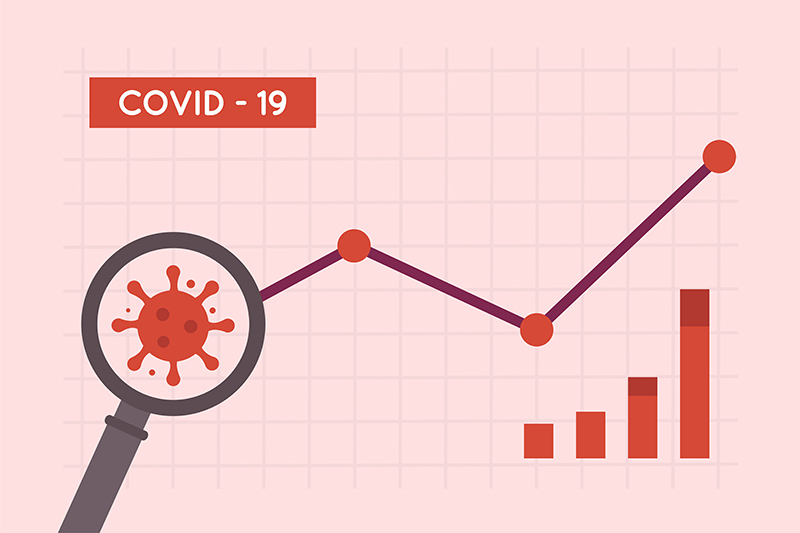The COVID-19 pandemic has sent shockwaves through the medical community by putting extreme stress on the information technology capabilities of health systems. Before March, hospitals were moving slowly in the direction of data literacy and EHR flexibility, but the health crisis has drastically increased the need for health systems to be able to take in and interpret large amounts of population data. The turn towards data literacy has been dramatic and sudden. Here are the specific ways strong data analytics can be used to combat the pandemic.
How can data analytics improve outcomes?
Through a variety of means, improving data capabilities will boost outcomes for patients. These gains are primarily found through a health system being well-informed, directly treating patients more effectively, and predicting where outbreaks may occur.
Strong data analytics software is able to rapidly pull in data from a range of sources. The speed is key to staying informed and making decisions based on real patient information instead of hearsay or assumptions. Insights gained in real time can be absorbed by healthcare workers, scientists, epidemiologists, and politicians in order to lead a united battle against the pandemic. In many ways, timely and accurate data is the backbone of the fight against COVID-19. In addition, analytics software that accurately pulls standardized data from various sources is key to avoiding the silo roadblock that will be discussed later.
From a treatment perspective, strong data capabilities give health systems the ability to care for large populations by crunching vast quantities of data. For example, healthcare analytics packages are able to consume information from tens of millions of patients to create treatment plans for a large population. These plans are formulated from thousands of variables from medical history to housing and transportation. With the ease at which COVID-19 transmits within a population, it is essential for health systems to be able to tailor their treatment plans to best suit an outbreak. In order to do this, there needs to be a strong grip on the data and information for a population.
The improvement that data strength can bring to treating patients clearly aligns with another major boost that a smart information team can bring: predictive methodology. This idea impacts treatment but goes far beyond and can be applied to all areas of the health system. The supply chain is a major area in which a health system can be improved using hints towards where the next outbreak is going to occur. For example, geotracking on devices can be used to determine whether an area is properly following quarantine lockdown rules or if there is a wide disregard for protocol. If insights such as these were gleaned from the data, administrators in a health system could divert the necessary equipment and personnel to properly address a future outbreak. Strong control over data allows health care providers to be more informed and carry out smart, preemptive treatment to patients in need. For this reason, data analytics are vital during a health crisis that impacts a vast population.
What are the main roadblocks to data-driven success?
What separates this period in healthcare from the past is the large influx of patient data flooding into health systems. The common problems that face data gathering and analysis are still present and magnified by the increase in traffic. In order to properly take in and leverage vital patient data, administrators at hospitals must be able to properly avoid these common pitfalls:
- Data Siloes – The first issue naturally stems from compiling data from multiple sources. The increase in patient data created by the pandemic has meant that an even greater amount of information is locked away from administrators. In addition to increasing volume, the crisis has moved the most crucial information into areas that are very hard to collect. Just speaking of the data already mentioned, information like geotracking and detailed patient histories are very hard to uncover. The pandemic has forced health systems to be able to handle large amounts of diverse data sources which can overwhelm and confuse a system that is unprepared.
- Data Governance – Once information is successfully gathered, health care organizations still run into the problem of standardizing data. Standardized data is vital in comparing outbreaks across health systems so meaningful insights can be derived in order to plan for future crises. The CDC dropped the ball in the early stages of the pandemic by not standardizing COVID-19 terminology. This error has made data collection and the sharing of fast-moving information extremely challenging during the pandemic.
- Data Privacy – Another important factor hindering health systems’ ability to effectively utilize data during the pandemic has been data secrecy and privacy. This is similar to siloing in that it hinders the ability to collect information effectively. The need to eliminate privacy is not the goal but rather to effectively anonymize data rapidly. Anonymized data is the only operable information source for many analytics packages, so it is vital to accomplish this step in order to derive insights.
There are forces operating to limit these roadblocks, most notably the National COVID Cohort Collaboration (N3C) initiative. Within this initiative lies the National Institutes of Health’s data collection space, which centralizes pandemic information to effectively learn about the disease on a large scale. This initiative avoids silo issues through the connections made by the N3C, a cohort that includes information from clinical, laboratory, and diagnostic areas of the health ecosystem. By centralizing the data in one platform, troubles surrounding data governance are limited because all information is being evaluated by the same standard. Large scale national information hubs are of course impossible for an individual health system, but this kind of data collection and analysis, on whatever scale possible, can reveal essential insights into improving outcomes for patients during the COVID-19 pandemic.
How can data prevent future health crises?
The large collections of data, similar to the one being built through N3C, will be extremely important resources as our society moves toward a vaccine and beyond. Insights gathered through these programs of data collection will be the backbone of regulatory guidelines for future outbreaks.
It is clear that improving short-term outcomes and future preparedness both hinge on the presence of strong data analytics. By avoiding roadblocks like data siloing, unclear data governance, and privacy, a health system can dramatically improve its ability to combat the COVID-19 pandemic.
- Data Analytics and Artificial Intelligence in the Race for a Coronavirus Vaccine - September 14, 2020
- The Balance Between Data Insights and Governance on the Path to Returning to Work - August 26, 2020
- Data Analytics and the Fight Against COVID-19 - August 10, 2020



